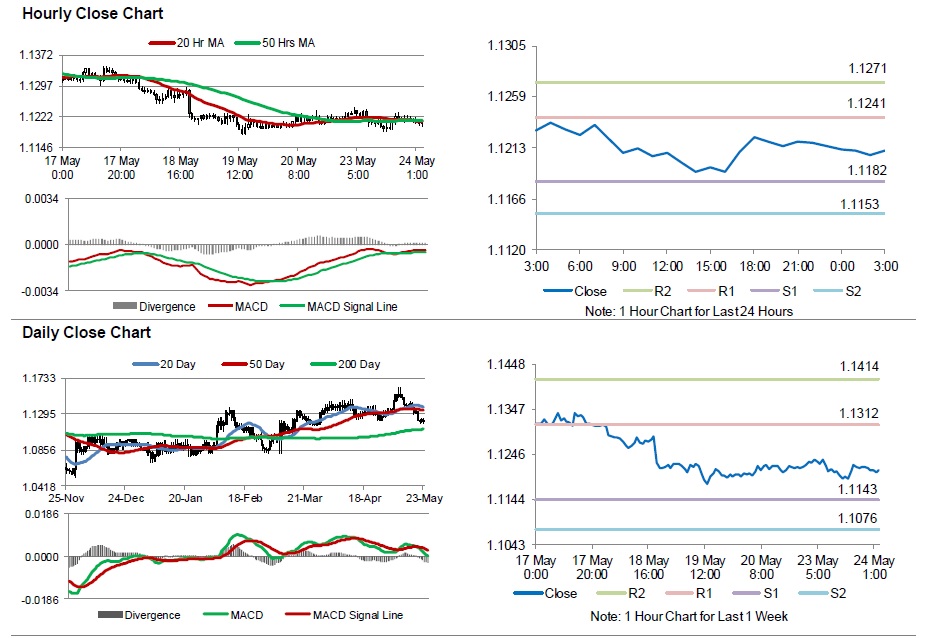For the 24 hours to 23:00 GMT, the EUR marginally declined against the USD and closed at 1.1214, as the Euro-zone’s latest PMI readings signalled few signs of improvement in the region.
Data showed that the Euro-zone’s preliminary manufacturing PMI dropped unexpectedly to a three-month low level of 51.5 in May, as fewer orders were placed and export activity posted only marginal growth. Market expectations were for an advance to 51.9, following a reading of 51.7 in the prior month. Further, the region’s flash services PMI remained steady at a level of 53.1 in May, compared to market expectations of an advance to a level of 53.2. On the other hand, the Euro-zone’s preliminary consumer confidence index improved for the second consecutive month to a four-month high level of -7.0 in May, compared to market expectations of a rise to -9.0. The consumer confidence index had recorded a reading of -9.3 in the previous month.
Meanwhile in Germany, manufacturers as well as service providers reported robust growth in May, mainly due to processing of backlogs and increased new orders. The nation’s flash manufacturing PMI rose above expectations to a five-month high level of 52.4 in May, compared to market expectations of a rise to a level of 52.0. Manufacturing PMI had recorded a level of 51.8 in the previous month. Moreover, Germany’s preliminary services PMI advanced to a three-month high level of 55.2 in May, compared to a reading of 54.5 in the prior month. Market expectation was for services PMI to advance to a level of 54.6.
In the US, preliminary Markit manufacturing PMI surprisingly declined to a level of 50.5 in May, as new orders expanded at the slowest rate so far this year. Investors had expected it to rise to a level of 51.0, following a reading of 50.8 in the prior month.
Separately, the St. Louis Federal Reserve President (Fed), James Bullard, warned that the US interest rates being kept too low for too long could cause financial instability in future. He further added that a relatively tight US labour market might exert upward pressure on inflation, raising the case for higher interest rates. Elsewhere, the San Francisco Fed president John Williams, indicated that he expects the Fed to increase rates two or three times this year.
In the Asian session, at GMT0300, the pair is trading at 1.1210, with the EUR trading marginally lower from yesterday’s close.
The pair is expected to find support at 1.1182, and a fall through could take it to the next support level of 1.1153. The pair is expected to find its first resistance at 1.1241, and a rise through could take it to the next resistance level of 1.1271.
Going ahead, investors look forward to Germany’s Q1 GDP data, scheduled to release in a few hours. Moreover, the US new home sales and Richmond Fed manufacturing index, due later today, will also garner a lot of market attention.
The currency pair is showing convergence with its 20 Hr and 50 Hr moving averages.

